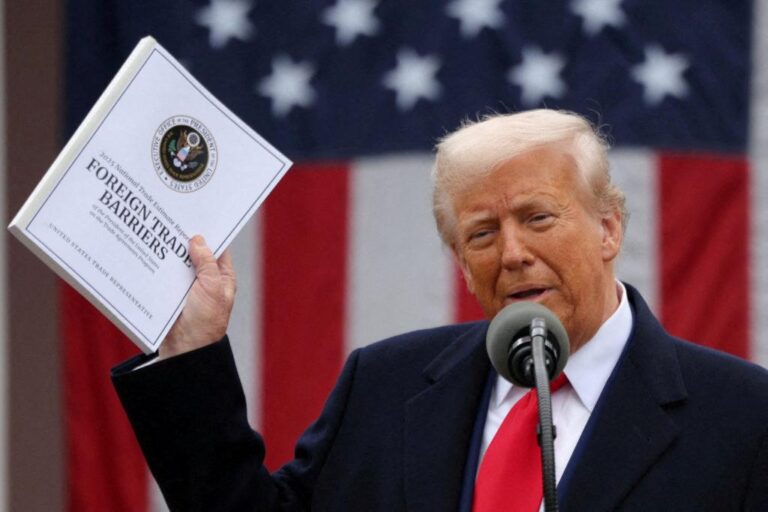In a move poised to escalate tensions between the United States and Brazil, former President Donald Trump has threatened to impose a sweeping 50 percent tariff on Brazilian exports. The announcement has sent ripples through diplomatic and economic circles, raising urgent questions about how current Brazilian President Luiz Inácio Lula da Silva will respond to what many see as a significant challenge to Brazil’s trade interests and regional influence. This development marks a critical juncture in the complex relationship between the two nations, with potential implications for global markets and geopolitical alliances.
Trump Threatens Brazil with 50 Percent Tariff Escalating Trade Tensions
In a surprising escalation of trade tensions, former U.S. President Donald Trump has announced the possibility of imposing a 50 percent tariff on Brazilian imports, targeting key sectors such as agriculture, steel, and electronics. This aggressive stance aims to counter what Trump describes as “unfair trade practices” harming American industries, but it threatens to destabilize an already fragile economic relationship between the two nations. The move has elicited concern from Brazilian exporters and international trade experts alike, given the potentially devastating impact on Brazil’s export-driven economy.
President Luiz Inácio Lula da Silva faces mounting pressure to craft a strategic response that balances assertive diplomacy with economic pragmatism. Options on the table include:
- Engaging in high-level trade negotiations to de-escalate tensions and seek mutually beneficial terms;
- Strengthening ties with alternative markets such as China and the European Union to reduce dependency on U.S. trade;
- Consideration of retaliatory tariffs on select American imports, which could trigger a wider trade conflict.
The unfolding situation serves as a litmus test for Lula’s foreign policy strategy amid a volatile global trade environment.
| Sector | Brazil’s Export Value (USD billion) | Potential Impact of 50% Tariff |
|---|---|---|
| Agriculture | 35 | Severe reduction in U.S. market share |
| Steel | 10 | Increased production costs and layoffs |
| Electronics | 7 | Disrupted supply chains and lost contracts |
Potential Economic Impact on Brazilian Exports and Domestic Markets
The announcement of a potential 50 percent tariff on Brazilian goods by the Trump administration could send shockwaves through Brazil’s export-driven sectors. Key industries such as agriculture, mining, and manufacturing face immediate threats, with agricultural exports like soybeans, beef, and coffee likely to bear the brunt. This steep tariff would not only make Brazilian products less competitive in the US market but also prompt exporters to seek alternative markets, potentially disrupting existing trade patterns and supply chains.
Domestically, the imposition of tariffs may trigger broader economic ripple effects. Consumer prices could rise as companies absorb higher costs or pass them on, fueling inflationary pressures. Additionally, Brazilian industries that rely on imported inputs from the US might encounter increased production costs, putting further strain on profit margins. The government under Lula’s leadership might need to consider:
- Implementing subsidies or support packages to assist affected exporters
- Strengthening diplomatic negotiations to seek tariff relief or trade diversification
- Promoting domestic consumption to reduce reliance on volatile export markets
| Sector | Export Value (USD Billion) | Potential Tariff Impact |
|---|---|---|
| Agriculture | 40 | High |
| Mining | 25 | Moderate |
| Manufacturing | 30 | High |
Strategic Responses Lula Could Deploy to Mitigate Tariff Fallout
To counteract the potential damage from a 50 percent tariff imposed by the United States, Lula’s administration is likely to implement a multifaceted approach aimed at both immediate relief and long-term economic resilience. Diversifying export markets will be crucial, with increased emphasis on strengthening ties with the European Union, China, and Latin American neighbors. This strategy includes negotiating new trade agreements and leveraging existing global alliances to offset the loss of U.S. demand. Additionally, Brazil could intensify domestic support for key industries affected by the tariff, deploying targeted subsidies and tax incentives to help businesses absorb increased costs while maintaining competitiveness.
Simultaneously, the Brazilian government might launch a coordinated diplomatic campaign, engaging in forums such as the World Trade Organization to challenge the legality of unilateral tariffs and advocate for fair trade practices. Domestically, investments in innovation and infrastructure could reduce the overall cost of production, lessening Brazil’s vulnerability to external shocks. The table below summarizes critical elements of Lula’s likely strategic response:
| Strategy | Objective | Expected Outcome |
|---|---|---|
| Market Diversification | Reduce dependency on U.S. exports | Broadened trade partnerships |
| Industry Support | Mitigate tariff impact on local businesses | Maintained production levels |
| Diplomatic Engagement | Challenge tariff legality | Pressure on the U.S. to reconsider |
| Infrastructure Investment | Lower production costs | Enhanced long-term competitiveness |
Concluding Remarks
As tensions mount between Washington and BrasĂlia, the looming threat of a 50 percent tariff from the Trump administration places Brazil at a critical crossroads. President Lula’s next moves will not only shape the immediate economic relationship between the two nations but also signal Brazil’s broader stance in an increasingly protectionist global environment. Observers will be watching closely as BrasĂlia balances domestic interests with the pressing need to navigate mounting geopolitical pressures. The unfolding developments promise to have significant implications for trade dynamics throughout the Americas and beyond.




